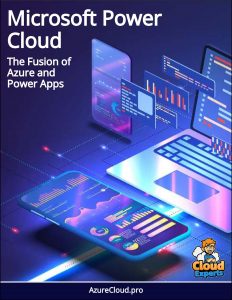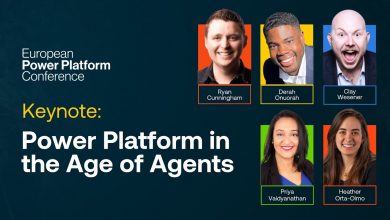Build Applications in Minutes with Power Apps and Microsoft Azure
In this presentation, the presenters talk on how Microsoft PowerApps can be used to rapidly build web and mobile frontend, use Azure for back-end and on how easily the existing systems can be linked using the prebuilt connectors.
 In this presentation, the presenters talk on how Microsoft PowerApps can be used to rapidly build web and mobile frontend, use Azure for back-end and on how easily the existing systems can be linked using the prebuilt connectors.
In this presentation, the presenters talk on how Microsoft PowerApps can be used to rapidly build web and mobile frontend, use Azure for back-end and on how easily the existing systems can be linked using the prebuilt connectors.
This presentation was presented by Mr. Pierce Bogan, Principal PM, Developer Division and Ms.Hailey Huber, Program Manager II, Power Platform.
At 3:25, Mr.Pierce briefs that it is vital to determine the types of applications that are best for rapid application development and low-code developments. The main pivots here include users, scale architecture and latency.
These pivots need to be looked up when the business scenario needs to be evaluated. These pivots help in deciding if the solutions to the business scenarios need to be built as a pro-developer application or by rapid application development.
At 4:39, Ms. Hailey briefs on Power Platform. This is a one low-code platform that connects all of the data and spans Office 365, Dynamic 365, Azure as well as the standalone applications. Power Platform comprises Power Apps for application development, Power Automate for the purpose of automating workflows and Power Virtual Agents that will serve as intelligent virtual agents.
She adds that with power apps, one can easily build web and mobile apps with a no-code platform/ full featured low code. In addition, all of the existing data can be connected with the help of 350+ pre-build connectors and custom connectors. Pro-dev extensibility enables ‘no limits’ development.
Illustration on how applications can be built rapidly
At 8:12, the presenter begins to illustrate how applications can be built with PowerApps and Microsoft Azure with data connectors. In the SQL database, we can find Power BI, Power Apps and Power Automate on the left navigation pane. During the demo, the presenter illustrates how to create an app that is connected to the SQL database to make a three page application that is fully customizable.
The advanced UI options will provide the citizen developers the capabilities to be able to edit things when they are unable to write code. With this, editing and deleting entries will just take a couple of seconds. We also have the option to any connector like Azure AD from the 350 connector options provided. She adds that if the app’s link is shared to anyone, they could view the application and access the data.
At 11:55, the presenter briefs on some of the cool features of power apps that will save time. Those include modifying themes and adding an AI builder. As a pro-developer, you need not create your own AI models. In 15 minutes, you should be able to train and create a fully functioning AI model that can do business card reader, object detector, and text recognizer. In addition, you can also add mixed reality, add galleries and also add more data.
You can choose one of the templates from thousands that would make the process of creating an automated workflow very much easier.
Concept of Fusion Development and benefits of AI Builder
At 16:29, Mr.Pierce provides a short brief on ‘Fusion development’. Fusion development can be enabled as a Pro Developer by architecting the applications for maximum reuse of the code components and then exposing them to the Power Platform for citizen developers to leverage.
At 18:09, the presenter lists the right tools that would help in rapid application development. They are GitHub, Visual Studio, Power Apps and Microsoft Azure. At 30:28, Mr. Pierce talks about UI controls. Power Platform has a Power Apps component framework that will provide support to build the custom UI for power apps. With this framework, we can easily create reusable components that could be used anywhere.
The PowerApps command line interface (CLI) supports automated build process and solution packaging. At 37:29, the presenter adds that workflows can be automated with seamless integration with Office, Dynamics and Azure. Thousands of build-in templates and actions are provided as options for the developers.
At 39:24, Ms. Hailey briefs about AI builders. AI Builder is responsible for adding intelligence to the applications. In addition, the AI builder also will enable the makers with domain experience to create the custom AI models and help in automating business processes like invoice processing or text analysis.
At 42:27, the presenter talks about ‘Democratizing data with Project Oakdale’. This is a built-in code data platform for the Microsoft Teams application. He adds that it is a subset of capabilities of the data platform behind Dynamics 365 and power platform. In addition, it provides storage, rich data types with enterprise capabilities and one-click solution deployments.
Thus, in this presentation, the speakers successfully elaborated with examples on how Power Apps could be used to rapidly build applications.



